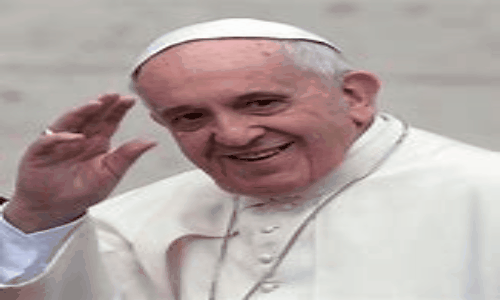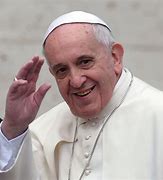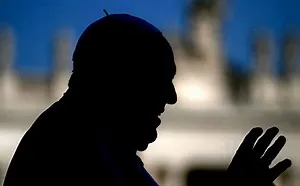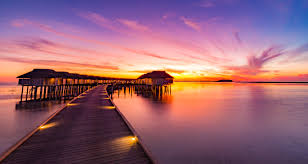Adverts
Papal succession is one of the most intriguing and historic events within the Catholic Church, steeped in traditions and symbolism that stretch back centuries. With Pope Francis’ health the subject of speculation and worldwide attention, the question that resonates among the faithful and curious alike is: who will be the next leader of the Catholic Church? In this context, the cardinals, key figures in the selection of the new pope, gather in a conclave that is shrouded in secrecy and mystery, but also in a deep sense of responsibility and spirituality.
The conclave, a tradition that has developed over centuries, is a complex process that brings together cardinals from around the world in the Sistine Chapel in Rome for a series of deliberations and secret votes. It is a time of great anticipation, not only for the selection of a new spiritual leader, but also for the direction the Church might take under his or her leadership. The votes, held in an atmosphere of intense seclusion and prayer, are marked by the burning of ballots, which generates the famous white smoke announcing the election of a new pope.
Adverts
In this environment of uncertainty and hope, several names are beginning to emerge as potential successors. From cardinals with strong influence in the Roman Curia to those with extensive pastoral experience in different parts of the world, the candidates reflect the diversity and contemporary challenges of the Church. The choice of the new pope could bring significant changes, both internally and in its relationship with global issues.
In addition to exploring the details of the conclave and the profiles of the main candidates, it is also important to understand the impact that this choice will have on the Catholic community and on the international scene. The new pontiff will have the mission of dealing with issues such as the modernization of the Church, geopolitical tensions and social issues that affect millions of faithful around the world. His leadership will be crucial in defining the role of the Church in the 21st century.
Adverts

The Papal Succession Process
The process of papal succession is one of the most complex and ritualistic events in the Catholic Church. After the death or resignation of a pope, the cardinals are called to Rome for the conclave, a secret meeting where the new leader of the Church is elected. The conclave takes place in the Sistine Chapel, and is shrouded in mystery and tradition that dates back centuries. During this period, the cardinals are isolated from the outside world, with no access to outside communication, until the decision is made.
The tradition of the conclave was formalized in the 13th century, and since then, several rules and protocols have been established to ensure the integrity of the process. Cardinals vote in secret, and a candidate must receive a two-thirds majority to be elected. This methodology ensures that the new pope is a consensus figure, capable of leading the Church in unity.
The Role of Cardinals in the Conclave
Cardinals, known as the princes of the Church, play a key role in the election of the Pope. Under the age of 80, they are the only ones entitled to vote in the conclave. The College of Cardinals is currently made up of cardinals from around the world, reflecting the global nature of the Catholic Church. This geographic diversity brings different perspectives and priorities to the conclave, making the process even more interesting and unpredictable.
Recommended Articles:
Cardinals are guided by specific criteria when choosing the new pope, including spirituality, leadership and the ability to communicate effectively with the modern world. In addition, internal politics and alliances formed over the years within the Vatican can significantly influence the final decision. As such, the conclave is a microcosm of the broader dynamics of the Church, a reflection of the challenges and hopes of Catholics around the world.
The Importance of the Papal Name
After election, the new pope chooses a papal name, a tradition that carries deep symbolic meaning. The name chosen often indicates the priorities and leadership style the new pope intends to adopt. For example, Pope Francis chose his name in honor of St. Francis of Assisi, signaling a papacy focused on humility, simplicity, and concern for the poor.
The papal name is therefore one of the first messages the new Pope sends to the world, offering insight into how he might address the challenges facing the Church. This choice is not made lightly, as the papal name will become part of his historical legacy. In some cases, the name may even influence public perception and the expectations of the faithful regarding his pontificate.
The Role of Technology and Media in the Conclave
In recent times, technology and media have played an increasing role in monitoring the conclave. Although the cardinals remain isolated during the voting process, the outside world is more connected than ever, with journalists and the faithful tuned in for updates. The black or white smoke emitted from the Sistine Chapel chimney, one of the most iconic signs of the conclave, is now accompanied by live broadcasts and real-time analysis.
This increase in media coverage raises questions about privacy and the pressure that cardinals may face. While some see transparency as a positive step, others argue that excessive attention could interfere with the spiritual and contemplative nature of the process. Regardless, technology has modernized the way the world follows this historic event, keeping tradition alive in a contemporary context.

The Issues and Challenges of the New Papacy
As the new Pope assumes the throne of St. Peter, he faces a series of challenges that demand effective and urgent responses. Among the most critical issues are the growing secularization in many parts of the world, the need for reform within the Church, and addressing allegations of abuse that have tarnished the reputation and trust in the institution. Each of these issues requires a leader with clear vision and determination.
Furthermore, the Catholic Church must deal with the diversity of its global congregations, which have distinct expectations and needs. This places the new Pope in a delicate position, where he must balance ancient traditions with the need to adapt to the modern world. This balance is essential to maintain the relevance and vitality of the Church in the 21st century.
The Role of the Faithful in the Process
Although the faithful do not have direct participation in the conclave, their influence should not be underestimated. The public opinion of Catholics around the world can shape internal discussions among the cardinals, especially on issues that are of great importance to the rank and file. The faithful expect the new pope to reflect their concerns and hopes, and to be able to revitalize the Church in areas where it is facing decline.
The engagement of Catholics through prayer and vigils during the conclave is a demonstration of the spiritual connection that unites the global community of the Church. This active involvement reinforces the importance of the Pope’s role as a universal shepherd, a leader who must listen to and guide his flock in times of uncertainty.
- Spirituality: The ability to inspire and guide the Church in matters of faith.
- Leadership: Ability to manage the institution in times of crisis and change.
- Communication: Ability to dialogue with believers and non-believers in an increasingly interconnected world.
The conclave is a time of expectation and hope for Catholics, a period in which the Church reflects on its past and future. The next Pope will be a symbol of continuity and renewal, a leader called to face the challenges of a world in constant transformation.

Conclusion
To understand the intricate process of papal succession, it is crucial to consider the fundamental role of the conclave in choosing the next leader of the Catholic Church. The death of Pope Francis will inevitably usher in a new chapter in ecclesiastical history, as the cardinals gather to discern who will be worthy to occupy the throne of St. Peter. This moment, loaded with tradition and significance, transcends a mere election.
First, the cardinals evaluate not only doctrine and charisma, but also the candidate’s ability to guide the Church in times of modern challenges. Second, the geographic and cultural diversity of the cardinals brings to the fore rich and sometimes complex debates about the future of the Church. Furthermore, with the current diversity in the college of cardinals, there is a growing expectation that a pope may emerge from previously underrepresented regions, such as Africa or Asia. As the conclave draws to a close, as the faithful eagerly await the white smoke that signals the election, the Catholic Church is preparing to embrace a new era.
Ultimately, the conclave's decision not only determines the next pope, but also reflects the spiritual and administrative direction the Catholic Church will follow in the years to come.
🕊️




